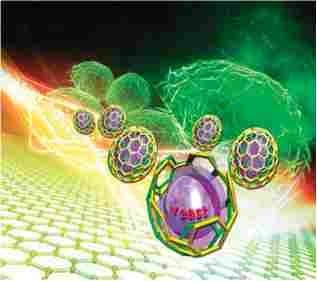Interfacing biological systems with artificial materials may have a significant impact in research fields such as single-cell-based sensors, neuron-on-a-chip technology, and tissue engineering. In particular, graphene, which is a two-dimensional atomic sheet of carbon, can be an interesting new candidate for the interfacing of a nanomaterial with biological systems such as living cells due to its superior physical, chemical, electrical, and mechanical properties.
Insung S. Choi, Byeong-Su Kim, and co-workers have now reported a first example of interfacing living yeast cells with a graphene nanosheet by way of layer-by-layer assembly. The authors demonstrate that living yeast cells can be encapsulated with multilayer nanosheets of graphene oxide (GO), an oxidized version of graphene with opposite charges. With their approach GO nanosheets can be coated onto the individual yeast cells while preserving the viability of the yeast cells, thus affording a means of interfacing graphene with the living yeast cells.
 The versatile layer-by-layer assembly technique allows this approach to be expanded by integrating other organic polymers or inorganic nanoparticles to the cells by hybridizing them with GO nanosheets through LbL self-assembly. It is demonstrated that incorporated iron oxide nanoparticles can provide magnetic properties to the biological system, and can thus provide new physical and chemical functions to living cells.
The versatile layer-by-layer assembly technique allows this approach to be expanded by integrating other organic polymers or inorganic nanoparticles to the cells by hybridizing them with GO nanosheets through LbL self-assembly. It is demonstrated that incorporated iron oxide nanoparticles can provide magnetic properties to the biological system, and can thus provide new physical and chemical functions to living cells.
While the interfacing of individual living cells with nanomaterials is still in its infancy, the authors have laid the groundwork for the application of biological systems in biosensors, biomedical devices, and tissue engineering.

















